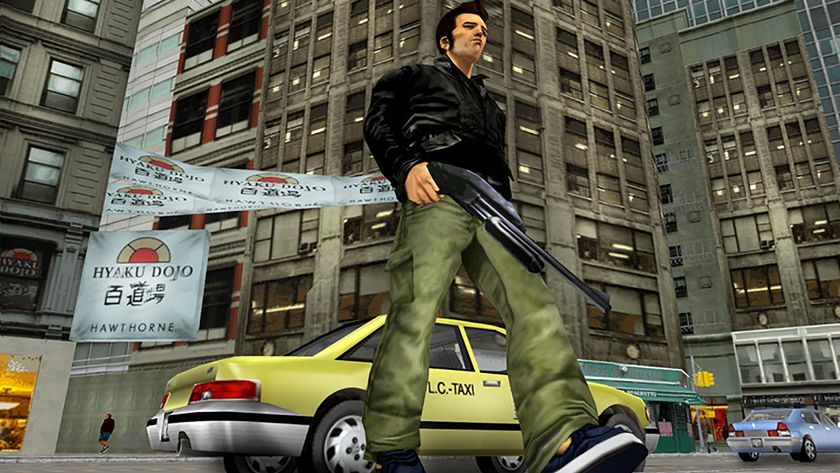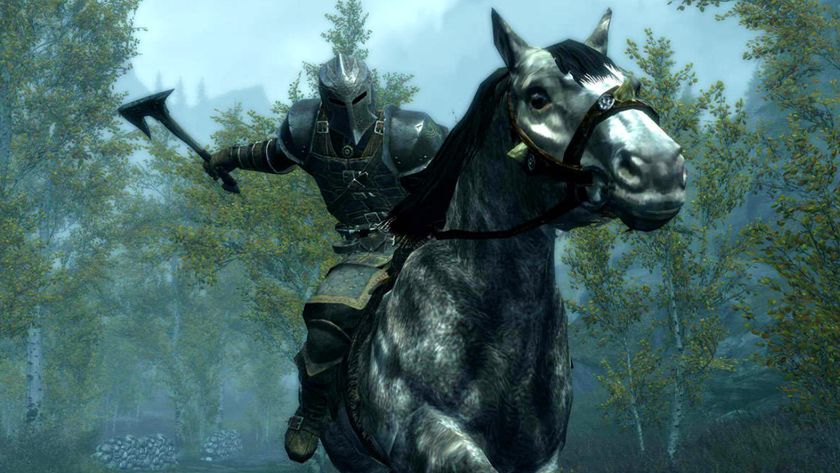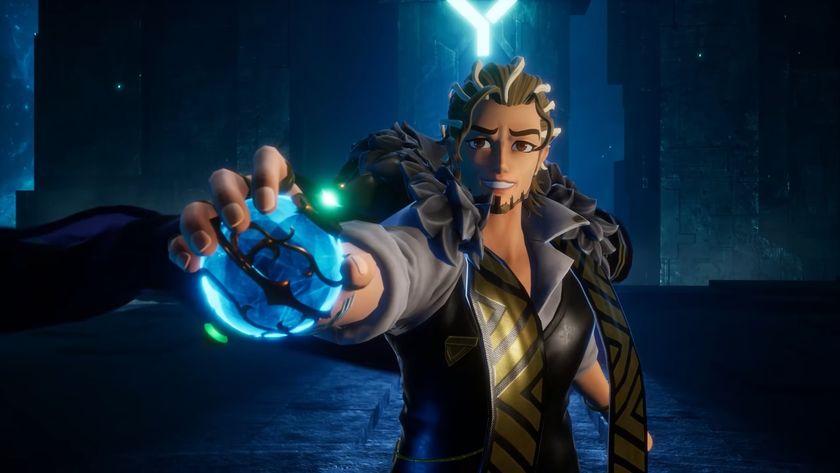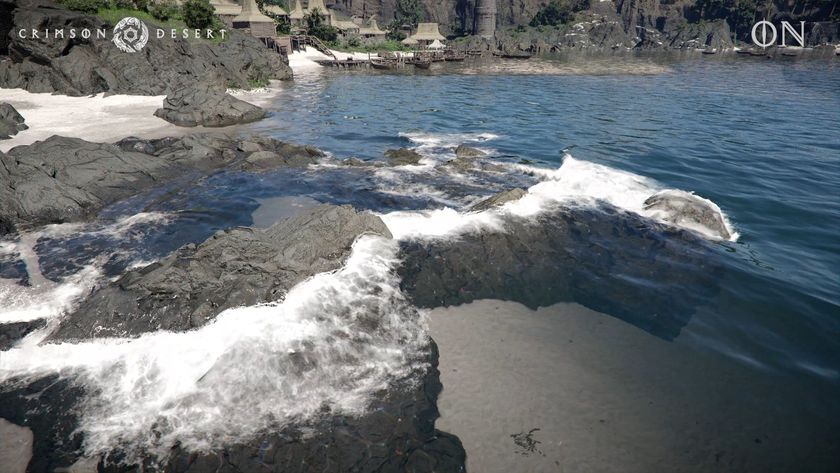The guns of World War II
VIDEO FEATURE: How do the shooters in Medal of Honor: Airborne stack up against the real thing?
In adding his two cents to the videogame-violence debate,scientist Christoph Klimmtonce said that "not everyone who plays a 'killer' game would be able to stand the stress of a real murder." We'd take it one step further and say that violent games don't even prepare would-be murderers for the stress of a real gun. It's something we found out firsthand when we sent two of our editors - one of whom had never shot a real gun despite being American, and one whose dad kept a "shootin' car" in the yard - down to Los Angeles for a Medal of Honor: Airborne preview event.
The highlight? Being trucked out to a desert firing range in a fleet of black Hummers to test-fire a selection of actual World War II-era firearms. After years of just playing games, we finally found out how it feels to carefully aim and fire a trusty M1 Garand rifle, squeeze off a burst of shells with a Tommy Gun and rip up a target with one of those German MG42s we've always been so fond of commandeering. We came away bruised, burned and deafened, but with a profound respect for what firearms can do.
Of course, after trying the real thing, any gun in a videogame - no matter how carefully patterned after the genuine item - is going to seem lackluster by comparison. But how lackluster? To determine how well Airborne approximates the real thing, we've compiled video evidence of six firearms in action, as well as a few relevant facts and our own personal reactions to the guns. Oh, and before you even ask, the answer is no - pulling off headshots in Counter-Strike will not make you a better real-life marksman. Sorry. But let's begin:
The gun: M1 Garand rifle
The history: Fans of World War II games should be intimately familiar with the Garand by now, seeing as it's been a staple of the genre for years. The semiautomatic rifle was formally adopted by the US military in 1936, but didn't see widespread use in Europe until 1943, when it almost completely supplanted the bolt-action Springfield M1903 as the standard service rifle for American infantry.
How it feels: Heavy and unwieldy. It's hard to imagine trying to run around on a battlefield toting this thing, let alone leaping out of a plane with it. Actually firing it, meanwhile, is like being punched in the shoulder by your asshole older brother as a supersonic hunk of sharp metal pops right the hell through whatever creature you were pointing it at.
Reality vs game: The M1's most striking feature is the way it roughly and repeatedly slams into your shoulder with each painful shot, and there's no way a limp rumble motor is going to replicate that. On the other hand, it feels just as accurate in real life as it has throughout the Medal of Honor series, and Airborne in particular at least does a good job of animating the recoil and accurately replicating the firing speed. And while it's impossible for a game to replicate the ear-splitting thunderclap the real gun makes, the signature metallic springing noise the Garand makes when ejecting its empty clip is at least faithfully reproduced, just as it's been in every Medal of Honor since the first one.
Sign up to the 12DOVE Newsletter
Weekly digests, tales from the communities you love, and more
How well is it replicated? About as well as it can be without the sensation of hefting a big lump of wood and metal and then getting into a shoving match with someone twice your size.
In adding his two cents to the videogame-violence debate,scientist Christoph Klimmtonce said that "not everyone who plays a 'killer' game would be able to stand the stress of a real murder." We'd take it one step further and say that violent games don't even prepare would-be murderers for the stress of a real gun. It's something we found out firsthand when we sent two of our editors - one of whom had never shot a real gun despite being American, and one whose dad kept a "shootin' car" in the yard - down to Los Angeles for a Medal of Honor: Airborne preview event.
The highlight? Being trucked out to a desert firing range in a fleet of black Hummers to test-fire a selection of actual World War II-era firearms. After years of just playing games, we finally found out how it feels to carefully aim and fire a trusty M1 Garand rifle, squeeze off a burst of shells with a Tommy Gun and rip up a target with one of those German MG42s we've always been so fond of commandeering. We came away bruised, burned and deafened, but with a profound respect for what firearms can do.
Of course, after trying the real thing, any gun in a videogame - no matter how carefully patterned after the genuine item - is going to seem lackluster by comparison. But how lackluster? To determine how well Airborne approximates the real thing, we've compiled video evidence of six firearms in action, as well as a few relevant facts and our own personal reactions to the guns. Oh, and before you even ask, the answer is no - pulling off headshots in Counter-Strike will not make you a better real-life marksman. Sorry. But let's begin:
The gun: M1 Garand rifle
The history: Fans of World War II games should be intimately familiar with the Garand by now, seeing as it's been a staple of the genre for years. The semiautomatic rifle was formally adopted by the US military in 1936, but didn't see widespread use in Europe until 1943, when it almost completely supplanted the bolt-action Springfield M1903 as the standard service rifle for American infantry.
How it feels: Heavy and unwieldy. It's hard to imagine trying to run around on a battlefield toting this thing, let alone leaping out of a plane with it. Actually firing it, meanwhile, is like being punched in the shoulder by your asshole older brother as a supersonic hunk of sharp metal pops right the hell through whatever creature you were pointing it at.
Reality vs game: The M1's most striking feature is the way it roughly and repeatedly slams into your shoulder with each painful shot, and there's no way a limp rumble motor is going to replicate that. On the other hand, it feels just as accurate in real life as it has throughout the Medal of Honor series, and Airborne in particular at least does a good job of animating the recoil and accurately replicating the firing speed. And while it's impossible for a game to replicate the ear-splitting thunderclap the real gun makes, the signature metallic springing noise the Garand makes when ejecting its empty clip is at least faithfully reproduced, just as it's been in every Medal of Honor since the first one.
How well is it replicated? About as well as it can be without the sensation of hefting a big lump of wood and metal and then getting into a shoving match with someone twice your size.












